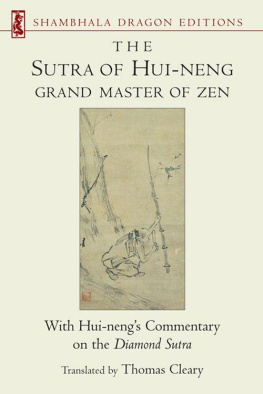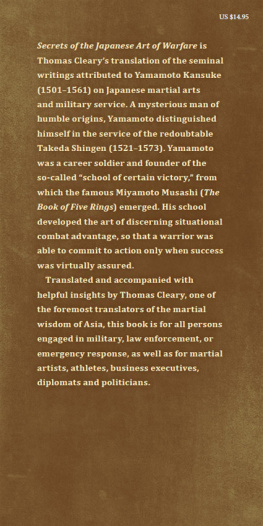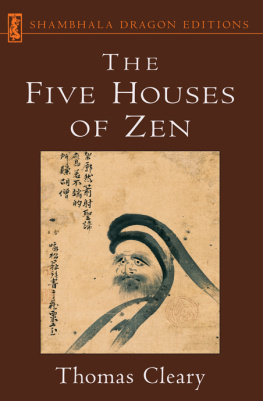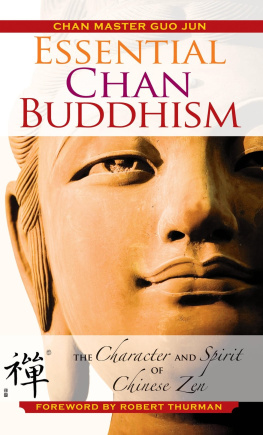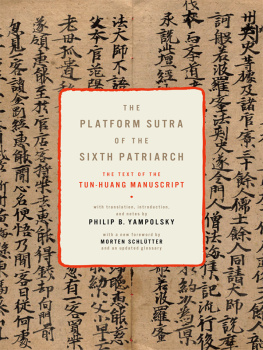Thomas Cleary - The First Book of Zen
Here you can read online Thomas Cleary - The First Book of Zen full text of the book (entire story) in english for free. Download pdf and epub, get meaning, cover and reviews about this ebook. year: 2012, genre: Religion. Description of the work, (preface) as well as reviews are available. Best literature library LitArk.com created for fans of good reading and offers a wide selection of genres:
Romance novel
Science fiction
Adventure
Detective
Science
History
Home and family
Prose
Art
Politics
Computer
Non-fiction
Religion
Business
Children
Humor
Choose a favorite category and find really read worthwhile books. Enjoy immersion in the world of imagination, feel the emotions of the characters or learn something new for yourself, make an fascinating discovery.

- Book:The First Book of Zen
- Author:
- Genre:
- Year:2012
- Rating:4 / 5
- Favourites:Add to favourites
- Your mark:
- 80
- 1
- 2
- 3
- 4
- 5
The First Book of Zen: summary, description and annotation
We offer to read an annotation, description, summary or preface (depends on what the author of the book "The First Book of Zen" wrote himself). If you haven't found the necessary information about the book — write in the comments, we will try to find it.
The First Book of Zen — read online for free the complete book (whole text) full work
Below is the text of the book, divided by pages. System saving the place of the last page read, allows you to conveniently read the book "The First Book of Zen" online for free, without having to search again every time where you left off. Put a bookmark, and you can go to the page where you finished reading at any time.
Font size:
Interval:
Bookmark:
The First Book of Zen
A masters comments on the classic
Poem on Faith in Mind
Translated from the Chinese by Thomas Cleary
Introduction
The fi rst book of Zen, called Faith in Mind , is attributed to the third great master of Chan Buddhism, the ancestor of Zen. The title alludes to the matter of mind, the central theme of the Lankavatara-sutra, the Buddhist scripture designated by the founder of Chan, according to early sources, for study in his school.
The matter of mind refers to the observation that our ordinary perception of reality is relative to the functions of our faculties, which are conditioned by biological and social histories, and subject to the influence of suggestion and acquired habits involving accepted assumptions, biases, myths, or illusions. It is possible, however, according to this teaching, to disengage consciousness from compulsive habits of thought so as to enable more direct witness of reality. The Mahaparinirvana-sutra says, Be master of mind, dont be mastered by mind. The Lankavatara-sutra says, One should make contact with the uniqueness of first hand ultimate attainment and be able to see independently of what is seen through subjective description.
For practical purposes, the teaching of the matter of mind distinguishes four parts of mind in order to set up the exercises intended to provoke individual experience of first hand realization: these are called the perceiver, the description, the self-witness, and the witness of the self-witness.
The perceiver refers to the state of mind and mental faculties at any given time; the description refers to the experience and interpretation of what is being perceived in that particular state of mind.
The self-witness is the ability to observe the relationship between the perceived and the description, such as the fluctuating influences of emotion, reasoning, and physical conditions on interpretation of experience.
The witness of the self-witness is the ability to monitor the self-witness for quality and consistency of attention and observation.
The immediate object of Chan practice, in these terms, may be described as developing and applying the capacities of the self-witness and witness of the self-witness in order to clarify consciousness.
The traditional stories of the transmission of the lamp of enlightenment in the first three generations of the Chan school are designed to illustrate these basic premises and practices.
In the first story, when the future second master asked the founder to pacify his mind, the founder said, Bring me your mind, and I will pacify if for you. The second master replied, When I look for my mind, I cannot find it. The founder then said, I have pacified your mind for you.
This story illustrates the exercise known as turning the light around and reversing attention, focusing attention on consciousness itself in order to disengage from immersion in impressions of objects and thoughts.
In the second story, the future third master came to the second master as an anonymous middle-aged layman, saying he was afflicted with palsy and begging the master to absolve him of guilt.
The idea that illness is caused by guilt had been promulgated for centuries in China by Taoist Celestial Masters, who offered rites of absolution for healing. The Buddhist Mahaparinirvana-sutra, translated into Chinese a hundred years before the founding of Chan, also features a story of illness caused by guilt, in a king who killed his own father. Several philosophers are brought in to rationalize the kings action to cure him of guilt, but this doesnt work. Finally he is healed by means of remorse and conscience.
Chan Buddhism develops conscience by developing consciousness. This involves a two-pronged approach; developing understanding of cause and effect, and cultivating the capacity to stand apart from impulses. This latter maneuver is set up by distinguishing the nature or essence of consciousness from the function of consciousness, and cultivating the ability to focus on essence. This is the practice illustrated in the story of the palsied layman who asked for absolution; the Chan master replied, Bring me the guilt, and I will absolve you. The layman said, When I look for the guilt, I cannot find it. The Chan master said, I have absolved you.
This exercise follows on the first, using awareness of the essence of consciousness to deprive impulses of influence. Not finding guilt when looking for it means not becoming immersed in mental content when focused on the nature of consciousness itself, so as not to fall under the spell of impressions, thoughts, and feelings.
In the third story, the future fourth master came to the third master as a teenager and asked to be liberated. The third master said, Who binds you? After a long silence, the teenager said, No one binds me. The third master said, Then why seek liberation?
The Lankavatara-sutra likens the habit of immersion in subjective imagination to the activity of a silkworm wrapping itself in a cocoon of its own making; Chan tradition refers to this as tying yourself up without rope. The purpose of the exercise illustrated in this story is to watch the mind for this tendency, in order to develop the ability to refrain from elaboration of subjective imagination. As in the first two stories, the effort of engagement in mental search, here alluded to by reference to the teenagers pause of silence, is critical to the applied meaning.
To illustrate the aim of awakening proposed by this process, the Buddhist teaching of mind speaks of four kinds of knowledge: these are called mirror knowledge, knowledge of equality, differentiating knowledge, and practical knowledge.
Mirror knowledge is described as non-conceptual awareness like a mirror that reflects whatever comes before it. This is so fundamental that there is no Chan without this mode of experience, but it is also extremely vulnerable to random absorption and is therefore not stable, so it is paired with the knowledge of equality.
The knowledge of equality has a metaphysical basis, which may be used to structure meditation, but effectively it refers in practice to the ability to stabilize the mirror knowledge and counteract its susceptibility to arbitrary immersion in objects. The knowledge of equality is therefore necessary in order to be able to handle mirror knowledge safely, but it too has a serious drawback when used in isolation. This is referred to in the Lankavatara -sutra as the affliction of the knowledge of equality, meaning the danger of lapsing into indifference. Therefore the third knowledge, knowledge of differentiation, is clarified in order to overcome indifference and observe relevance, understanding relations in the realm of beings and phenomena. A Chan proverb in the classic Book of Serenity says, The heart of nirvana is easy to attain; knowledge of differentiation is hard to clarify.
Knowledge of differentiation forms the basis of the fourth kind of knowledge, practical knowledge. This practical knowledge, as described in the Flower Ornament Scripture, another sourcebook used by classical Chan masters , includes both mundane and mystical arts. In the book on the ten stages of enlightenment, for example, referred to repeatedly in the Lankavatara-sutra, concentration on perfection of meditation, from which Chan Buddhism gets its name, is associated with the fifth stage. In this same fifth stage, the Flower Ornament says, while perfecting meditation people striving for enlightenment practice whatever in the world would benefit sentient beings, such as writing, teaching, mathematics, material sciences, medical sciences, and many other occupations, including song and dance, drama, music, storytelling, and entertainment as well as the construction of villages, cities, parks, canals, reservoirs, and so on, including the development of moral discipline, meditation, and mystic knowledge.
Next pageFont size:
Interval:
Bookmark:
Similar books «The First Book of Zen»
Look at similar books to The First Book of Zen. We have selected literature similar in name and meaning in the hope of providing readers with more options to find new, interesting, not yet read works.
Discussion, reviews of the book The First Book of Zen and just readers' own opinions. Leave your comments, write what you think about the work, its meaning or the main characters. Specify what exactly you liked and what you didn't like, and why you think so.

